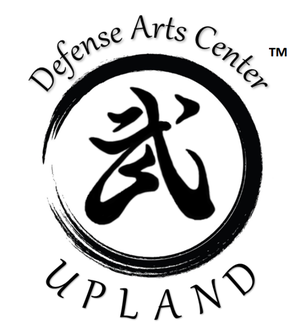When Aponte Sensei asked me to write a few words for the newsletter the first thing that came to mind was to thank everyone at the dojo for all that you’ve taught me. I’m not just speaking to my seniors, although they have taught me much, but also to those of you who have attended my classes. I’ve taught some of you from the first day you walked onto the embu-jo (dojo floor) all the way up to your Dan ranks. Along the way you have all made me a better teacher and person. To paraphrase my Matayoshi Kobudo Kodokan teacher, Franco Sanguinetti Sensei, a serious practitioner upon receiving each Dan ranking realizes that it is not an opportunity to rest but an obligation to work harder and continue to learn so that your students are lead by example and not command.
You have all forced me to continue to improve and grow. I thank you all.
In the past year I’ve had a couple of significant events in my martial arts training. In July of last year I was honored to travel to the local Honbu Dojo of Araki Mujinsai Ryu Iaido, along with my Sempai, Tim Richmond, and Kohai, Joe Fraizer, to train and test with Dowdy Sensei, a highly ranked practitioner from Japan along with Mike Kazmer Sensei, who many of you have met at our dojo. High-ranking members of the ryu (often including Toyoda Shigeharu Soke, the 17th Seito Soke and head of the organization) come to the United States and conduct the testing once a year. This year I was honored to test and receive my 2nd kyu. Even more exciting was to watch as my Sempai tested and received his Sandan.
Iaido is a fascinating art and has taught me much about the importance of a light touch. The blade gives an immediate critique; too much muscle and the cut fails; not enough focus on where the Kissaki (tip) of the blade is and the blood you see is your own. Yet all the same concepts from Shotokan are present: connection to the ground, proper use and timing of the hips, movement from the core, etc. The principles of the martial arts transfer and make each better. I strongly recommend that everyone involved in a “hard style” art such as Shotokan join us every Saturday and find out how much the sword can improve your empty hand training.
As you all know I have another passion; namely Matayoshi Kobudo Kodokan. I have trained for nearly 20 years in various Kobudo styles, but have been fortunate to have found and trained for the past eight years with Franco Sanguinetti Sensei, 7th Dan. In February 2015 I received my Sandan in Matayoshi Kobudo Kodokan, a ranking that is recognized with the Matayoshi family in Okinawa.
Sanguinetti Sensei has had a huge impact on my growth in the martial arts. Very much a traditionalist, Sanguinetti Sensei teaches more than just the technique. Our requirements for each rank include increased knowledge of the weapon, including its origins and applications in the fighting art. Bunkai is an absolute requirement to progression. Sanguinetti Sensei places great emphasis on understanding not only the Japanese language, but also the Okinawan dialect. I have found that this emphasis on not only the art but also the history and culture of Okinawa has greatly enhanced my personal journey.
Just like Iaido, Kobudo is different and yet the same as Shotokan. The core principles of connection, body shifting and dropping, pendulum motion etc., are all involved with the weapon. In fact the weapons in many ways enhance the dynamics of body movement. Muscling a Bo, Eku (oar), Kuwa (hoe) or Nunti Bo for an hour will result in an exhausted and sore body. But allow the hips to rotate and the hikite to pull and the weapons power and speed is visibly increased. The shorter weapons also demand the use of body connection and dropping. To stop a Bo attack with either a Sai or Tunkwa requires the arm to connect with the body and the body to sink using the core and body weight to redirect the power of the attack. But more importantly, to me at least, is that the extra length and weight of the weapon allows the practitioner to “feel” the dynamics at play, more so than with the empty hand.
So yet again, Kobudo has enhanced my Shotokan training. For anyone interested, my group of dedicated practitioners (Dr. Dave Michelson 3rd kyu, Adam Chang 6th kyu and Drew and Jennifer Clinkenbeard 9th kyu) meet on Friday evenings at 7 pm.
One final thank you to Aponte Sensei; without your patient guidance I would never have made this journey.
As Mike Whiteside Sensei has said, there is no magic to the martial arts it is just hard work. I am honored and privileged to sweat along with all of you at the USKL.
- Bob Johnson

